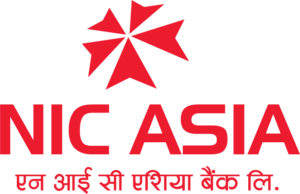
Well, it is not even a thing to argue that to run a bank, both traditional (paper and pencil) banking, as well as digital banking, are needed. Relying entirely on traditional banking is something today’s generation would never agree with. On the other hand, going fully digital may not be convenient for some customers as well as banks. Thus, at present, understanding both banking styles and implementing the best practice is more than crucial.
|
|
Life with Traditional Banking
The traditional banking sector revolves around going to the bank, doing the paperwork, and getting the service. When using traditional banking, customers can visit a nearby branch and speak to a bank employee directly. Meeting bank workers face-to-face can have a beneficial effect on customers’ perceptions of the bank. In the majority of the time, traditional banking offers a wider range of financial goods.
Birth of Digital Banking To Overcome Cons of Traditional Banking
However, traditional banking did bring lots of discomfort to people. They only allowed lower accessibility and took a long time to open savings accounts. Time is another crucial restraining factor as most banks are open for limited time only, this causes people to lose their energy and time. Moreover, this banking style makes the clients deal with a lot of bureaucracy, thus creating
the scenario of moving from one room to another. Hence, to overcome these particular issues, digital banking made its entry where customers can access banking service 24×7 conveniently.
7 Key Features of Digital Banking
-
Easy internet/Online banking
Customers can enjoy online banking with a device (PC, laptop, or Mobile) and a strong internet connection. It is simple but tech-driven banking. Online banking is quick and efficient. Customers can simply open an account online and recieve it within one day. After getting an account and maintaining the sufficient balance, customers can perform the banking tasks that need to be done.
[ If interested, you can open online account in NIC ASIA Bank.]
-
Mobile banking options
Nowadays, every financial institution is more focused on providing banking services via mobile banking, using a designated bank app. Like NIC ASIA operates mobile banking with NIC ASIA MoBank App. With mobile banking, exploring the banking features and performing banking tasks is now just a tap away. Just sit comfortably, have mobile and required mobile apps intact, and set strong wifi to avail mobile banking. Further, with mobile banking, customers can access accounts 24×7, make investments securely, check account balances, find ATM locations, transfer funds, and even apply for an IPO.
-
Cardless Withdrawal
Cardless Cash is another new feature in digital banking, specifically mobile banking. It enables customers to get cash from an ATM without an ATM card. For a cardless cash withdrawal, all customers need is a mobile app.
For this, customers should select the cardless withdrawal option and enter the amount. Then customers can go to a nearby ATM booth, click the cardless withdrawal option in the ATM machine, enter the mobile number, OTP and desired withdrawal amount, and there customers can get cash from the ATM machine without having the ATM card.
-
Digital wallet
Users of e-wallets can own money, make payments, and send and receive money electronically. customers must first load the customer’s account before adding money to the customer’s digital wallet. These electronic wallets have simplified online transactions. In fact, digital wallets are the future of digital transactions.
customers can benefit from e-wallets’ convenience, financial effectiveness, and increased security. Moreover, banks in Nepal collaborate with such e-wallets to provide customers with discounts and incentives.
-
Easy utility bill payment and top-up
With digital banking, customers can pay for customers’ utility bills, electricity, water, and gas bills. customers can also pay for airline tickets, EMI, school fee, travel, and social security. Customers can also have a topup for mobile, satellite TV, and ISP. No queues, no forms, just tap and pay customers bills instantly!
-
Apply IPO
The decision to apply for an IPO, online or offline, is entirely up to customers, but with online IPO Apply, it gets faster and more convenient. Customers can apply for a Demat account online as it is available on most of the Nepali banks’ mobile apps.
-
Multi-Factor Security
When using multi-factor authentication, the user must provide two or more verification factors to access a transaction. OTP in multi-factor authentication system safeguards financial transactions. Further, this unique code generated by Multi-Factor Security protects a consumer from internet threats during transactions.
Scenario of Digital Banking in Nepal
Today thousands of Nepalese have availed digital banking services. Nepal is still in the infancy stage of adopting digital banking. For more convenience and transparency, Nepalese banks have embraced digital banking. However, for a variety of reasons, digital banking cannot be successfully used in rural areas. Insufficient awareness of internet technologies can be the root of the problem. However, it has been discovered that caution and vigilance are required for safer online banking.
[Read our Blog on Digital Banking in Nepal ]
NIC ASIA Bank- Developing the Art of Digital Banking in Nepal
NIC ASIA Bank is a leading commercial bank in Nepal with high ethical standards and dedication to bringing ease to people’s life. The bank provides top-notch digital banking services accompanied by its Sarbashrestha range of savings accounts. Moreover, the bank offers the best deals on all of its premium banking products. Not only is NIC ASIA redefining digital banking in Nepal, but the bank is equally emphasizing face-to-face communication for the best banking experience. Hence, covering both aspects, NIC ASIA Bank takes firm steps to become the “ No.1 Bank in NEPAL“
Share in


Leave A Comment